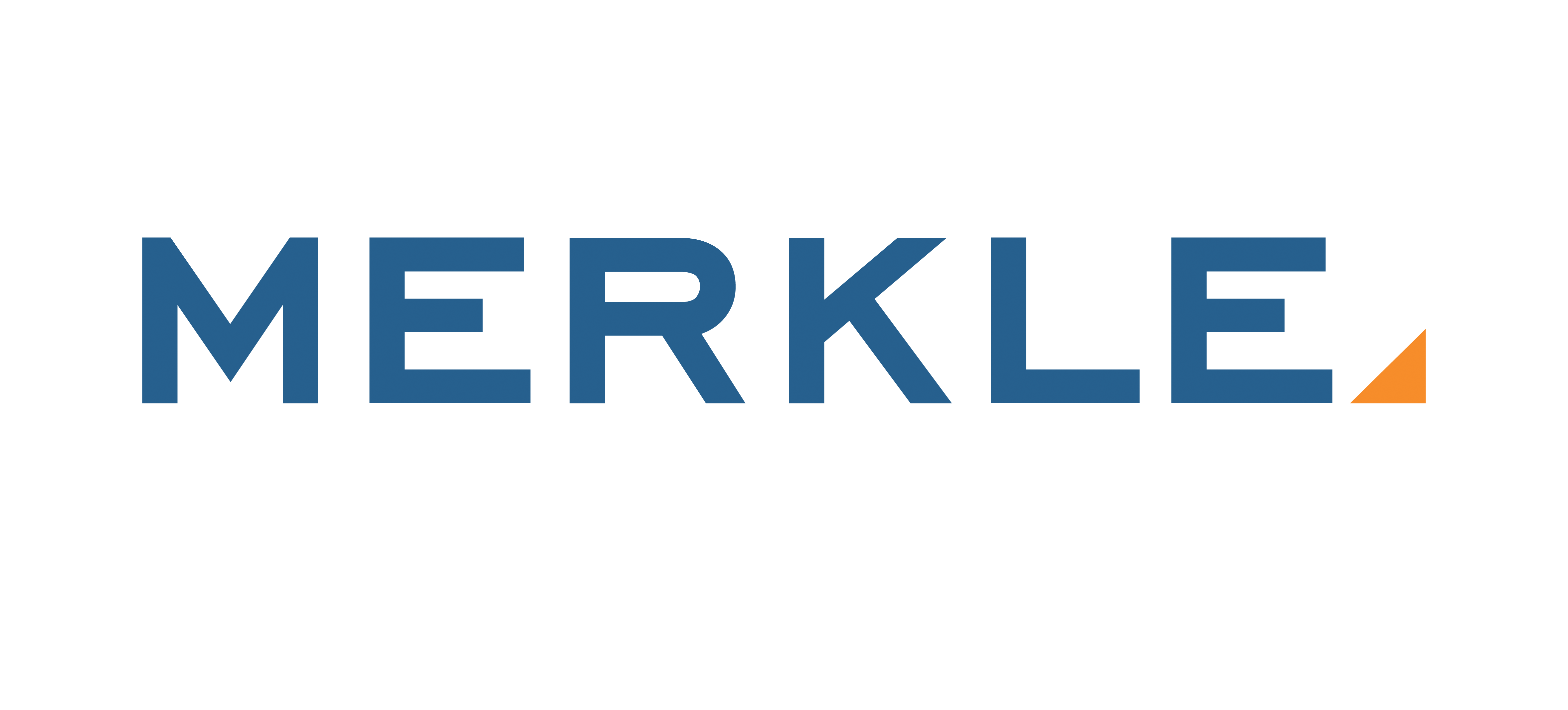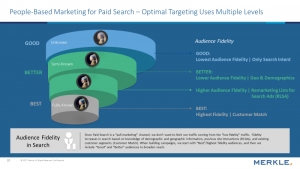 In late 2015, Google first announced the rollout of Google Customer Match, giving advertisers the ability to target their known, first-party customers directly via search. As we close out 2017, some marketers are still behind the curve in adopting a full range of people-based marketing capabilities in their search strategies.
In late 2015, Google first announced the rollout of Google Customer Match, giving advertisers the ability to target their known, first-party customers directly via search. As we close out 2017, some marketers are still behind the curve in adopting a full range of people-based marketing capabilities in their search strategies.
Today’s marketer must approach paid search beginning with people, not a keyword. Search ads then become meaningful interactions with customers in their journey, creating brand engagement, value, and loyalty.
Audience Visibility and Fidelity
Paid search has always sought to market to specific individuals. At its origin, search advertisers used the keyword to understand the people behind the keyboard. Keywords gave us insight into each user’s intent, based on what and how they searched. Now, more than ever, advertisers have access to audience data, which allows us to understand the history and context of the individual’s digital journey.
As audience targeting rapidly grows to become an important signal in search targeting, this creates the opportunity to combine the user’s history, context, and intent to create powerful business intelligence.
Search audiences today have three levels of visibility: known, semi-known and unknown. Within this framework, the relative targeting fidelities can be defined as good, better and best. It is important to note that marketers should always begin investing with the highest fidelity (best) and broaden from there to include lower fidelity targeting (better and good).
Also Read: Who’s Responsible for Solving the Billion-Dollar Ad Fraud Problem?
Best
- Fully known individuals are identified via one-to-one email address match, such as with Customer Match. Here, in real time, the advertiser can vary its ad auction bid, ad messaging, and custom landing page experience based on the known customer. Furthermore, the advertiser has the capability to leverage first-party data to inform decisioning. This is the highest form of people-based marketing fidelity or best.
Google Customer Match Uploader service also provides advertisers the ability to augment their first-party data files by including their customers’ phone numbers, mailing addresses, and physical addresses to cross-reference for email addresses that can be leveraged and matched by Google.
Better
- Semi-known individuals are largely targeted via search-based cookie lists, or remarketing lists for search ads (RLSA). The limitation is that the customer must have previously engaged with the advertiser’s brand via search, and the cookie is set on a browser and device basis as opposed to a fully known user basis.
Additionally, these cookie-based signals are limited to the activity performed by the browser, as opposed to fully known individuals, including their attributes and conversion behaviors. Google also allows for similar audiences for search and Shopping, which are basically look-alike targeting options built around RLSAs.
Another form of semi-known audience targeting leverages Google’s demographic, geographic, and other known user attributes. Google makes these targeting criteria available directly in the AdWords interface. The advertiser does not need to have first- or third-party data, and the searcher does not need to have any prior engagement with the advertiser’s website. Google’s knowledge of the individual in age, gender, geography, and household income represent the main contributors to audience targeting capabilities within the Google ad platform. This data is not perfectly reliable, so it is listed in the low end of our semi-known audience category. Within this people-based-marketing fidelity framework, semi-known audiences can be defined as better.
Good
- Unknown individuals are the audience of general, non-targeted search. Here, the primary intent signals are users’ search queries without regard for who they are, where they are, or what other behaviors and attributes ladder into their customer journey. This is the lowest form of PBM fidelity, or good.

In Merkle’s Q3 Digital Marketing Report, it was revealed that 20% of all Google traffic was audience addressable, which is twice as high as the previous year. Clearly, the opportunities to deploy a people-based marketing strategy within search are growing rapidly.
Advertisers should seek to leverage all levels of search audience targeting by ensuring the following tactics are incorporated into their programs:
- Media strategy and planning begins with audience first – fully known, semi-known and unknown.
- When forecasting and budgeting for search, invest your first dollar in fully known individuals, then semi-known individuals, and finally unknown individuals.
- Tracking and measurement technology are leveraged to connect search within the full customer journey on a fully known individual level.
- Bid, messaging, and landing page/user experience strategies are customized based on the fidelity of audience targeting to maximize performance and customer engagement.
Also Read: Eight Ways AI Will Be Used In Marketing In 2018











